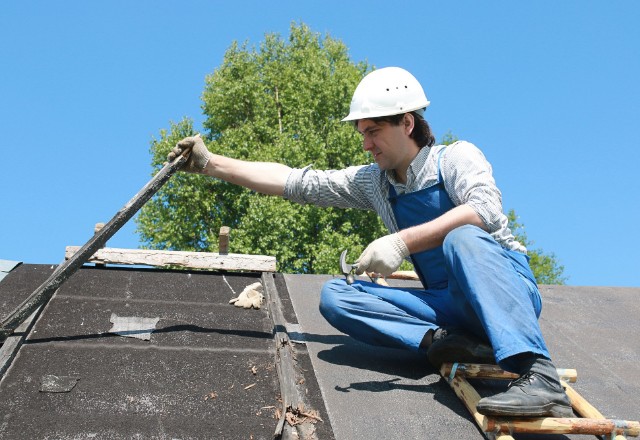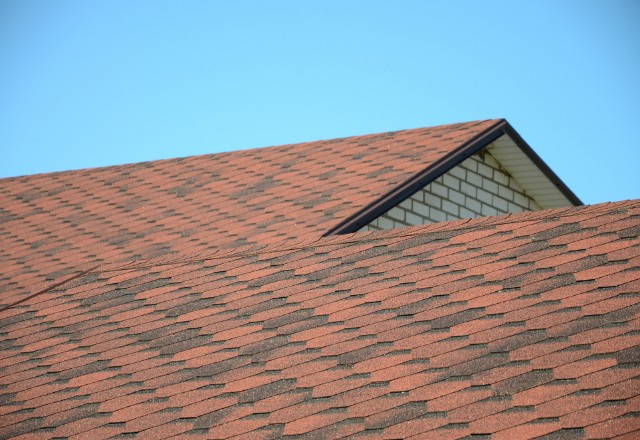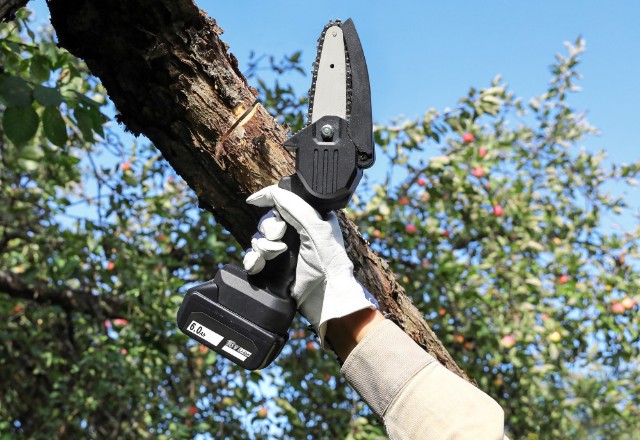Beautiful and mature trees near your house may add to your property’s appeal, but it’s crucial to understand the potential risks they pose to your roof. Trees can cause significant damage to your roofing system, leading to costly repairs if not addressed on time. Gusty winds, heavy branches, falling debris, clogged gutters, and moisture buildup from trees can weaken the roof structure, leading to leaks, mold growth, and complete roof failure. In this article, we’ll discuss the various risks of trees damaging your roof and provide helpful tips on how to remove leaves from gutters, maintain your roofing system, how to deal with tree damage, and prevent further damage.
Disclaimer: This article is for informational purposes only and does not constitute professional advice. We strongly recommend that you contact a licensed tree removal or roofing specialist for any specific questions you may have. Advance Roofing LLC has proudly been providing top-notch roofing services to the Spokane, WA area for years, offering unparalleled quality and expertise. If you need assistance with any roof-related issues, don’t hesitate to get in touch with us – we’ll be glad to help!
How can trees damage your roof?
Trees are a beautiful addition to any yard, but they can also be a potential hazard for your roof.
- Falling branches and low-hanging branches can damage your roof’s shingles, leading to leaks and costly repairs.
- Moss and mold growth can also occur due to moisture buildup from leaves and evergreen needles that accumulate on the roof.
- Additionally, clogged gutters from tree debris can cause water damage and structural issues.
It’s crucial to have nearby trees trimmed regularly to prevent any potential damages, or even have them removed if they pose a significant threat. Keeping gutters clean and using gutter guards can also help prevent clogs. By taking these precautions, you can maintain the curb appeal of your home while extending the lifespan of your roofing shingles.
Trees Near Your Roof

Trees can be a beautiful addition to any property, but they can also pose a risk to your home’s roof. As trees grow taller and their branches extend, they can cause damage to your roof shingles, fascia board, gutters, and more. If your home has mature trees nearby, it’s important to understand how they can affect your roof and take steps to prevent potential damages. In this section, we will discuss how trees can damage your roof, how to remove leaves from gutters, how to deal with tree damage to the roof, and how to replace broken shingles. By following the tips and guidelines provided, you can protect your roof and keep your home safe from costly repairs.
Risk of Tree Branches and Limbs Hitting Your Roof
Trees add value to your property and improve curb appeal. However, they can also pose a threat to your roof.
Nearby trees with overhanging branches can cause serious damage to your roof when storms or strong winds hit. Tree branches can scratch and puncture roof shingles, which may result in openings for water to seep through. These openings can cause water damage to the underlying structure of the roof, leading to costly repairs.
Falling tree limbs can also damage gutters, creating blockages that cause water to overflow. This can cause algae growth and potential damage to the entire roof. In some cases, it may even render the roof beyond repair, making it essential to replace the entire roof.
- To avoid such risks, ensure that you trim branches that are close to your roof and remove nearby trees where possible.
- Additionally, consider installing gutter guards to prevent the accumulation of debris in the gutters.
- It is also crucial to have a professional roofing contractor inspect your roof regularly for potential damages caused by tree branches and limbs hitting your roof.
As a homeowner, be aware of the dangers of nearby trees and take the necessary precautions to alleviate costly repairs.
Risk Of Tree Sap Damage To Your Roof
Tree sap is one of the most common causes of roof damage. If left uncleaned, the sap can corrode roofing materials, leading to costly repairs. This risk is especially high in areas with many trees, as the sap can accumulate quickly and become difficult to clean.
Frequent cleaning is essential to avoid damage from tree sap. This can be done by using a garden hose or leaf blower to remove any debris from the roof’s surface. For more stubborn sap stains, a solution of warm water and mild soap can be used. It is important to avoid using harsh chemicals or tools that can scratch or damage the roofing material.
Ignoring tree sap damage can lead to expensive repairs in the long run. It is a preventable problem that can be easily avoided with regular cleaning. Homeowners should take the necessary steps to keep their roofs free from sap and other potential damages caused by trees. This will not only extend the life of their roof but also maintain the curb appeal of their home.
Risk Of Leaves and Debris Clogging Gutters and Drains
Leaves and debris can accumulate in gutters and drains, causing damage to your roof. When gutters become clogged, water cannot flow through them properly, leading to overflow and stains on your home’s exterior. As the water spills over the side of the gutters, it can also lead to foundation damage and water damage in your basement or crawl space.
Regular cleaning and maintenance of your gutters is crucial to prevent clogs and keep your home safe from potential damages. Installing gutter guards can also help to keep leaves and debris out of your gutters. Alternatively, you can use a gutter scoop to clean out the gutters yourself, or hire a professional gutter cleaning service to do the job for you.
To avoid costly repairs and potential safety hazards, it’s important to keep your gutters clean and free of any blockages throughout the year. By taking simple preventive measures, you can protect your home and keep it looking its best for years to come.
Signs Of Tree Damage On A Roof

Trees are a beautiful addition to any home’s landscape, providing shade and beauty. However, they can also pose a significant threat to your roof if left unchecked. If you have mature trees near your house, it’s essential to know what to look for to spot potential damage early on. In this section, we’ll explore the signs of tree damage on a roof and what you can do to prevent costly repairs in the future. By being proactive and aware, you can safeguard your home’s structural integrity and curb appeal from the potential damage caused by trees.
Structural Damage
When trees come into contact with your roof, they can cause significant structural damage. This damage often affects the support system of your roof, including the fascia board, rafters, and trusses. In many cases, this damage is not easily visible, and may go unnoticed until it becomes more extensive and costly to repair.
Damage to the fascia board, which is the long, thin board that runs along the lower edge of your roof, can cause water to seep into your home. This can lead to mold growth, damage to the interior of your home, and even compromise the structural integrity of your roof. Additionally, damage to the rafters or trusses can cause your roof to sag or even collapse.
It’s essential to address any structural damage to your roof as soon as possible to prevent the problem from escalating. Hiring a professional roofing contractor is the best option to assess and repair any damage effectively. Be aware that attempting to repair damage without the proper tools or experience can cause further damage and safety hazards. In conclusion, it’s best to take prompt action to avoid significant, costly repairs.
Water Damage
Trees near your roof can cause various types of water damage if left unchecked. One common issue is clogged gutters caused by fallen leaves and branches. When gutters become clogged, rainwater overflows and can damage your home’s foundation, leading to costly repairs.
Trees can also cause leaks in your roof if their branches rub against it, or if their roots spread and push against the foundation of your home. Once leaks occur, they can cause water damage, leading to mold growth and even more expensive repairs if left untreated.
Mold growth can cause health issues and is costly to remediate, so it’s important to address leaks as soon as they’re discovered. Additionally, water damage can weaken the structure of your home, putting you and your family at risk.
To prevent water damage caused by trees near your roof, keep your gutters clean and trimmed regularly. If you suspect any leaks or other damage, contact a professional roofing contractor as soon as possible to avoid costly repairs down the line.
Cracked or Broken Shingles
Broken or cracked shingles can cause leaks in your roof, leading to water damage and costly repairs. Fixing these issues requires a few simple steps.
- First, gather the necessary materials for the job, including a pry bar, hammer, utility knife, replacement shingles, and roofing nails.
- Once you have your materials, climb onto the roof and slide the pry bar beneath the row of shingles directly above the damaged area.
- Lift the pry bar gently until the nails pop out.
- Afterward, use the pry bar to lift the shingle above the damaged shingle. Remove the nails in the same manner as before.
- Slide the replacement shingle into place and secure it with new roofing nails.
- Repeat this process for any additional damaged shingles.
It’s vital to replace broken shingles as soon as they’re spotted to prevent further damage to your roof and home. Regularly inspecting your roof for damaged or missing shingles can save you from costly repairs in the future.
Missing Shingles or Nails

Missing shingles or nails on your roof can lead to serious problems like water damage and structural damage. It’s important to repair them as soon as possible to prevent further damage. Here’s how:
- First, gather the necessary materials such as replacement shingles, roofing nails, a pry bar, and roof cement. Determine the number of missing nails on the shingle and pry up the shingle to remove the nails. Carefully remove any remaining pieces of the old shingle.
- Next, place the replacement shingle in the spot where the missing shingle was located. Nail the new shingles in place, using roofing nails. Make sure to use the same number of nails that were used on the original shingle.
- Finally, seal the surrounding shingles with roof cement to prevent any potential leaks. Spread a thick layer of roof cement under the new shingle and press it down firmly into place. Apply more roof cement along the edges of the shingle to create a watertight seal.
It’s essential to repair any missing shingles or nails as soon as possible to prevent further damage to your roof. Following these simple steps can save you from costly repairs in the future.
Preventing Damage From Trees To Your Roof
Trees can cause significant and costly damage to your roof if proper precautions are not taken. From the potential for broken shingles to the buildup of debris in your gutters, trees can create a variety of issues that can lead to major repairs. Preventing damage from trees to your roof requires understanding potential risks and taking proactive measures to mitigate them. This part of the article will explore the most common types of tree damage to your roof and provide tips on how to prevent them, ultimately helping you protect your home and your wallet.
Mature Trees – Trim Regularly to Avoid Potential Damage

Regularly trimming mature trees that are situated near your roof is crucial in avoiding potential damage. Although trees add value, beauty, and curb appeal to your property, they can cause a great deal of damage to your roof if not taken care of. Overgrown branches can become a serious problem, abrading on the shingles and gutters of your roof, potentially causing serious harm to your property. Furthermore, untrimmed trees create entryways for pests, such as rats and squirrels, to seek shelter in your home. You don’t want unwanted guests taking up residence under your roof!
To avoid potential damage, it’s important to keep an eye on the trees near your home and trim any overgrown branches regularly. Don’t wait until it’s too late; be proactive and take action now to save yourself from costly repairs down the road. In addition to trimming the trees, you should also clean your gutters regularly to ensure that there is no debris present that could cause damage to your roof. Taking these steps will help you maintain your home’s structural integrity and keep it safe from any potential damage that trees could cause.
Remove Dead Branches and Limbs from Around Your Home
Removing dead branches and limbs from around your home is critical in maintaining the safety of your property and preventing costly damages. Here are the steps to follow:
- Inspect your trees for any signs of illness or rotting, such as splitting trunks, presence of fungi, or rotten branches.
- Contact a tree removal company if you find any unstable trees or branches, as they may pose a potential threat to your property.
- Promptly remove any dead branches and limbs that you come across, as they can fall and damage your roof, siding, or windows.
- Regularly trim your trees to keep them healthy and prevent future damages.
Dead branches and limbs not only pose a safety risk but also attract pests, such as termites, which can weaken the structure of your home. Don’t hesitate to call a tree removal professional to help you assess and remove dead or unstable trees. Protecting your property is just a call away.
Install Gutter Guards to Keep Debris Out of Gutters
One effective solution to prevent debris from accumulating in your gutters is to install gutter guards. These can be easily found at a gutter supply shop or roofing company and are available in a variety of materials and styles. It is recommended to invest in high quality guards that will last longer and require less maintenance.
Gutter guards work by allowing water to flow into the gutters while keeping leaves, twigs, and other debris out. This helps to prevent clogged gutters, which can lead to water damage and costly repairs.
However, it’s important to keep in mind that even with gutter guards, some debris may still accumulate in your gutters over time. It’s recommended to use a leaf blower occasionally to keep your gutters clean and functioning properly.
Conclusion
In conclusion, trees can cause a great deal of damage to your roof if not properly taken care of. Regularly trimming the trees near your property and installing gutter guards are essential steps to protect your home from potential damage and ultimately save yourself from costly repairs. Taking these proactive measures will help you maintain the structural integrity of your property for years to come.



 509-201-4190
509-201-4190
